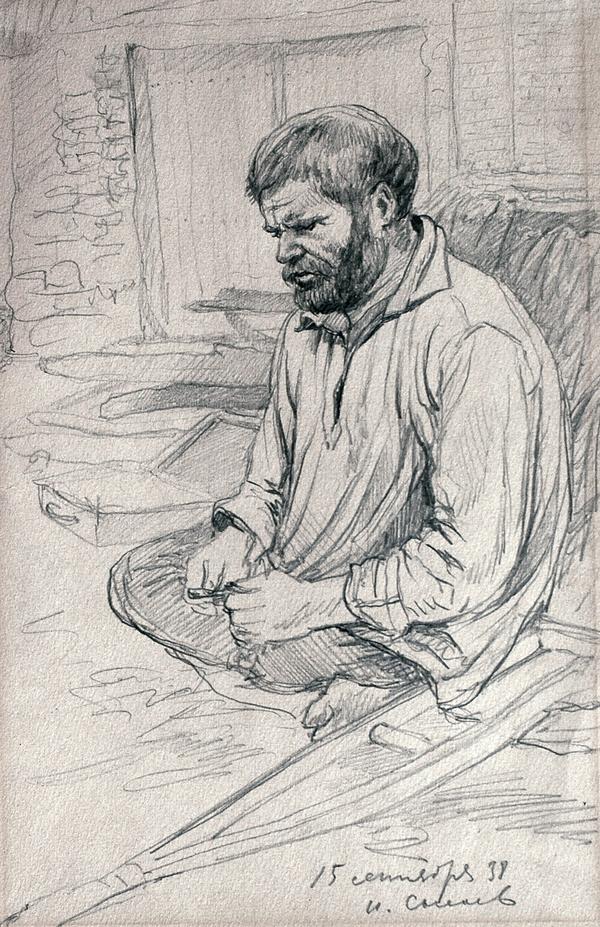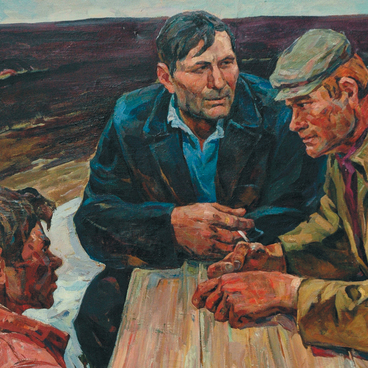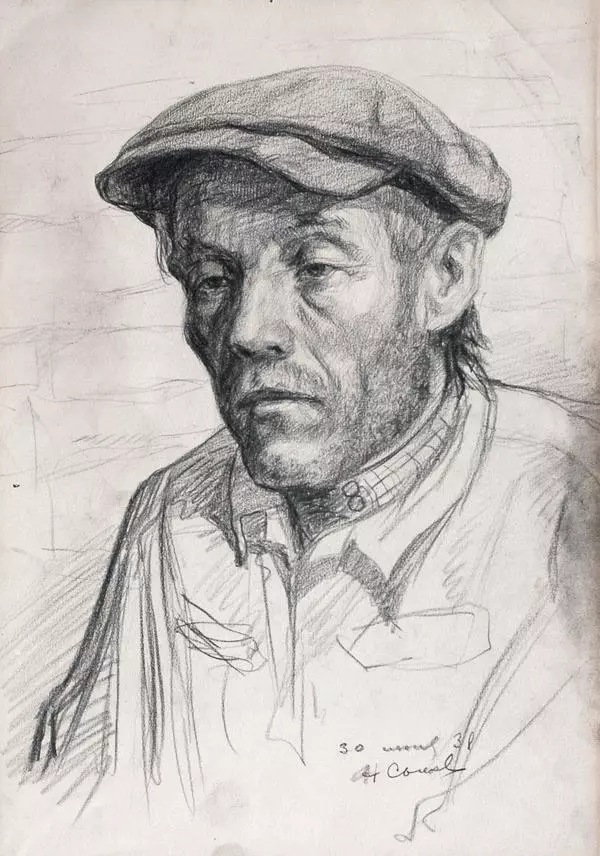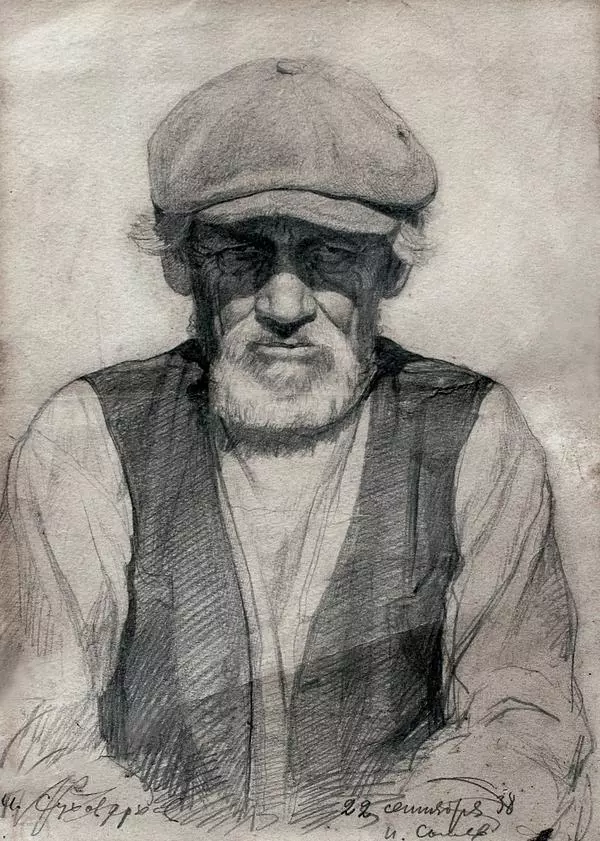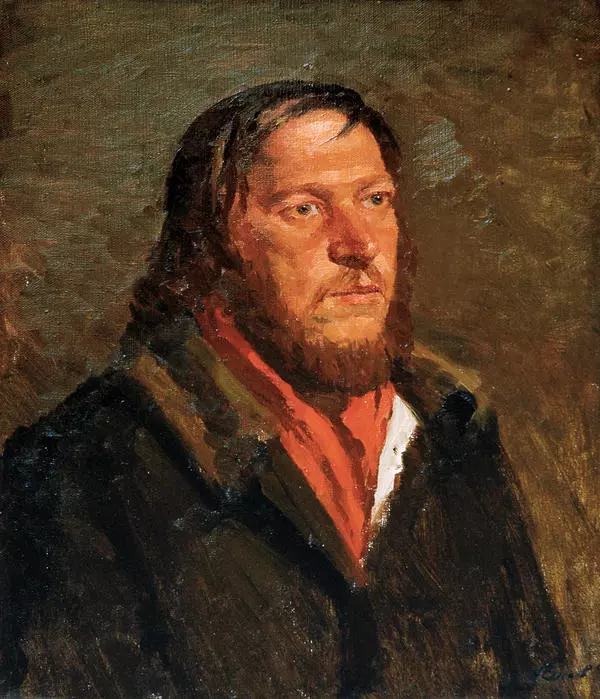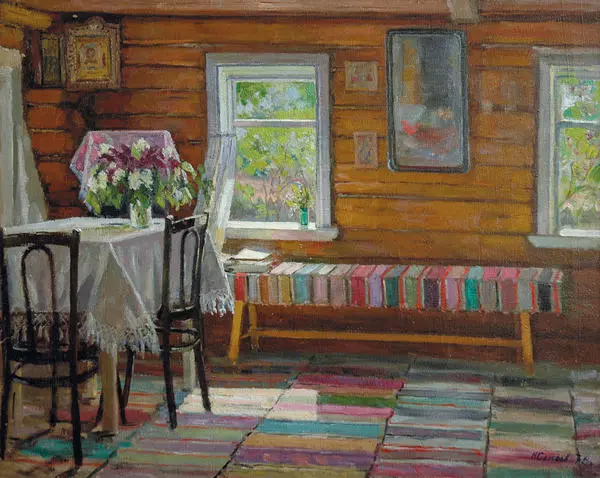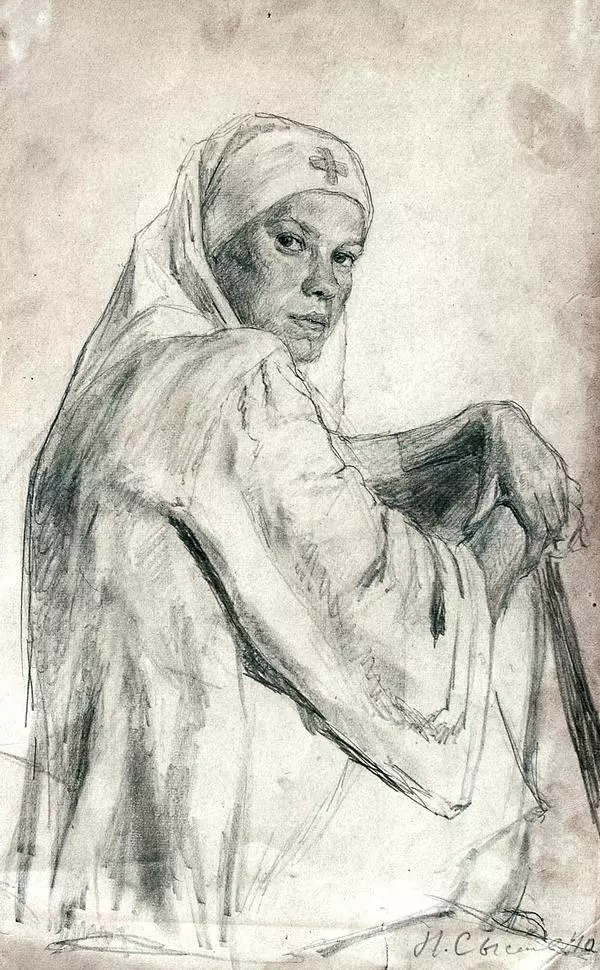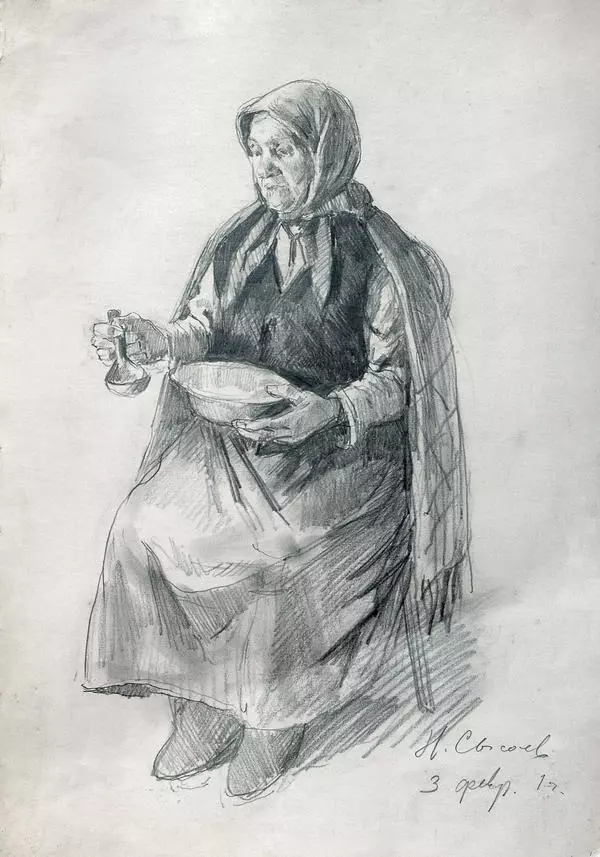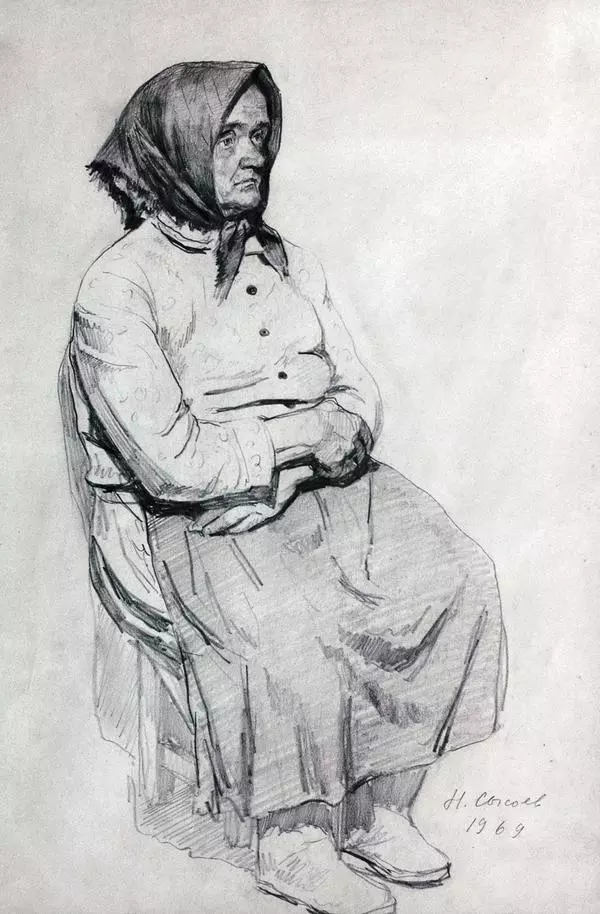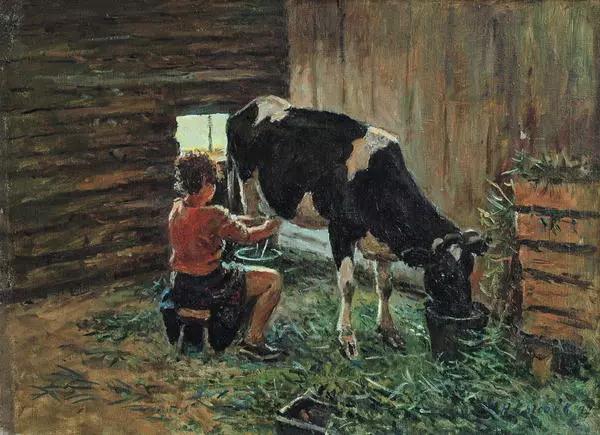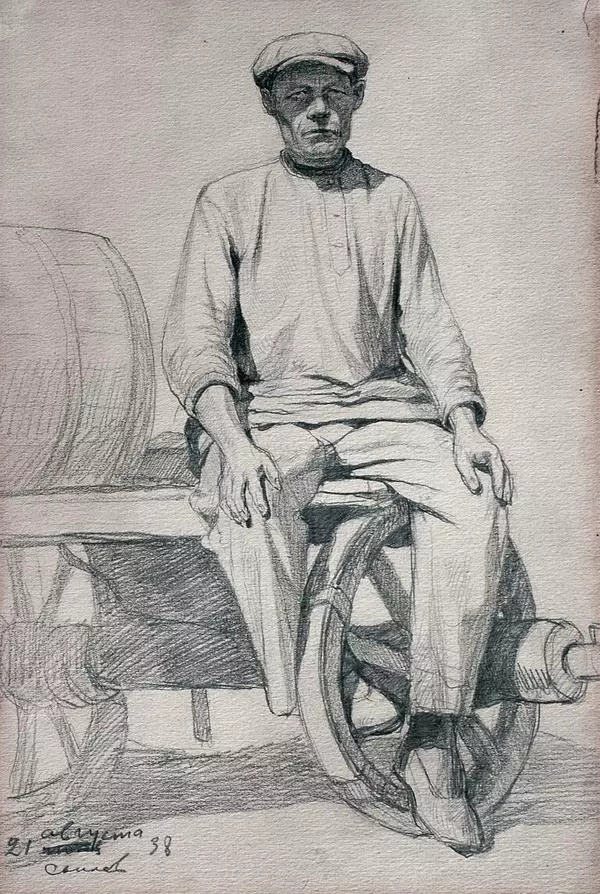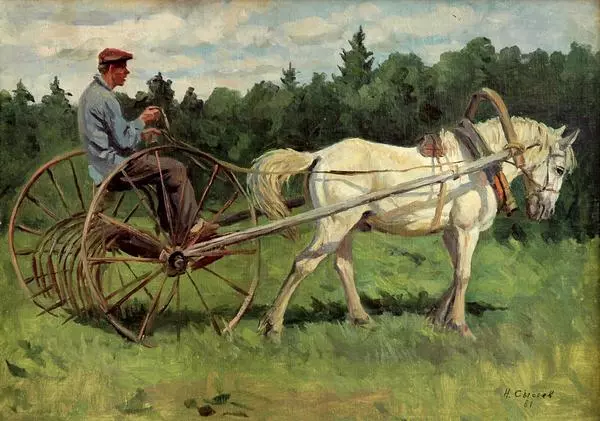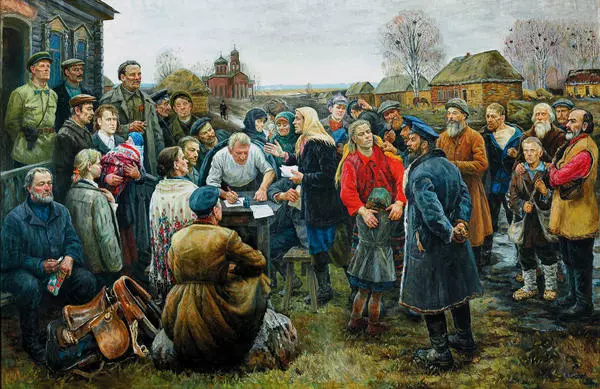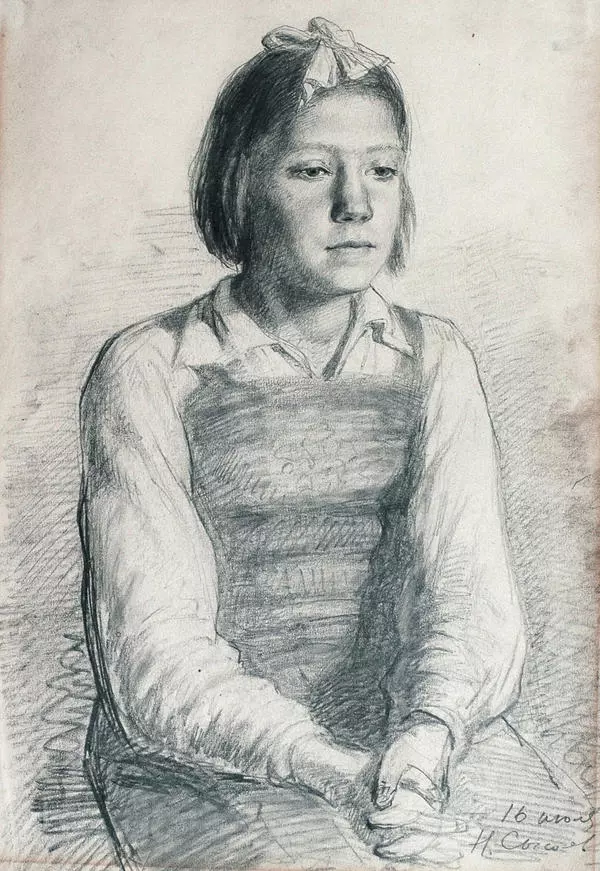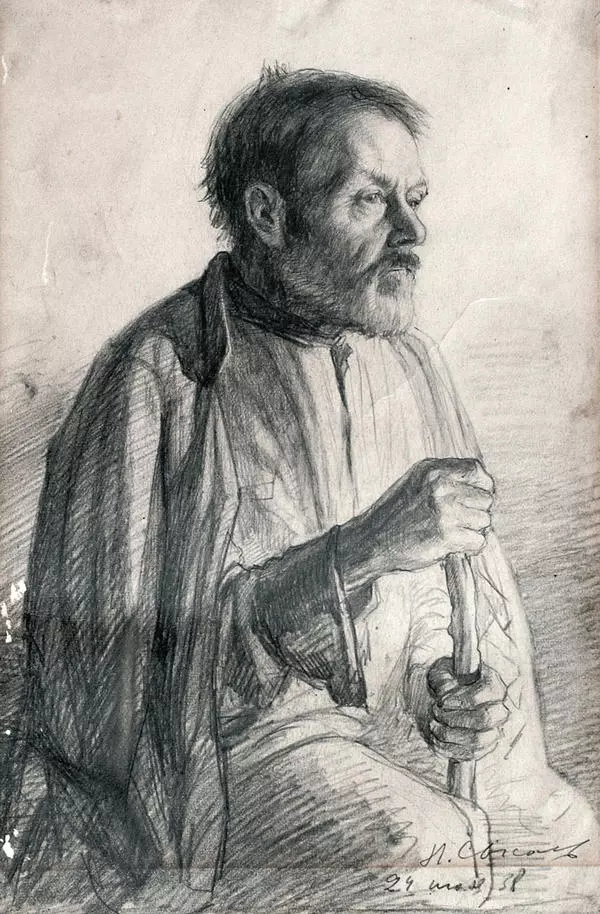The village of Slanskoe in the Lipetsk Region was the birthplace of Nikolai Sysoev; the artist spent his childhood there. He would return there for summer vacation while a student first at the 1905 Moscow Art School (1934–1938), and then at the Moscow State Academy Art Institute (1938–1948).
In the spring of 1938, Nikolai Sysoev graduated from college and after 4 months matriculated at the art institute without entrance exams. The future student spent the entire summer leading up to his studies in his native village of Slanskoe. He drew and painted a great deal while there, especially portraits of rural peasants that were to come in very handy to him in future work.
One piece from this period is the drawing Disabled Civil war veteran. The man depicted in the drawing is not looking at the artist or posing. His gaze is directed downward as he thinks deeply about something personal. The deep wrinkles on his face eloquently convey his experiences. The crutch lying next to him reminds us of the difficult fate of those passing through war and forced to bear the consequences. Civil war broke out in Russia in 1918–1922 following the October Socialist Revolution of 1917. Revolutionary events divided the country’s population into several warring factions. As a result, a huge number of people died, and even more were wounded and crippled. Many were forced to leave the country.
In this seemingly simple pencil drawing, you can break down and evaluate the artist’s technique. The man’s face has been worked out in great detail, his clothes are drawn more freely with softer lines, and the background with a wall and gate is outlined by light quick strokes. This is how the artist highlights key points, and of greatest importance here is the face, the personality of the one being portrayed, followed by his clothes and crutch in the foreground, which indicate the man’s the position, that he is disabled. There is a background, but it doesn’t distract the viewer. The intensity of the line also varies — in the foreground it is darker, with more weight, while in the background it is lighter, thinner, and in some places the pencil barely touches the paper. Besides highlighting key points, it also lends the work depth and perspective.
At school, Sysoev paid particular attention to drawing. He worked a great deal on drawing with pencil and sketching in addition to his main assignments. The result of his work is a series of portraits of the inhabitants of the village of Slanskoe, made in 1938. Many of his works from this period are on display in Pages from the 20th Century exhibition.
In the spring of 1938, Nikolai Sysoev graduated from college and after 4 months matriculated at the art institute without entrance exams. The future student spent the entire summer leading up to his studies in his native village of Slanskoe. He drew and painted a great deal while there, especially portraits of rural peasants that were to come in very handy to him in future work.
One piece from this period is the drawing Disabled Civil war veteran. The man depicted in the drawing is not looking at the artist or posing. His gaze is directed downward as he thinks deeply about something personal. The deep wrinkles on his face eloquently convey his experiences. The crutch lying next to him reminds us of the difficult fate of those passing through war and forced to bear the consequences. Civil war broke out in Russia in 1918–1922 following the October Socialist Revolution of 1917. Revolutionary events divided the country’s population into several warring factions. As a result, a huge number of people died, and even more were wounded and crippled. Many were forced to leave the country.
In this seemingly simple pencil drawing, you can break down and evaluate the artist’s technique. The man’s face has been worked out in great detail, his clothes are drawn more freely with softer lines, and the background with a wall and gate is outlined by light quick strokes. This is how the artist highlights key points, and of greatest importance here is the face, the personality of the one being portrayed, followed by his clothes and crutch in the foreground, which indicate the man’s the position, that he is disabled. There is a background, but it doesn’t distract the viewer. The intensity of the line also varies — in the foreground it is darker, with more weight, while in the background it is lighter, thinner, and in some places the pencil barely touches the paper. Besides highlighting key points, it also lends the work depth and perspective.
At school, Sysoev paid particular attention to drawing. He worked a great deal on drawing with pencil and sketching in addition to his main assignments. The result of his work is a series of portraits of the inhabitants of the village of Slanskoe, made in 1938. Many of his works from this period are on display in Pages from the 20th Century exhibition.

